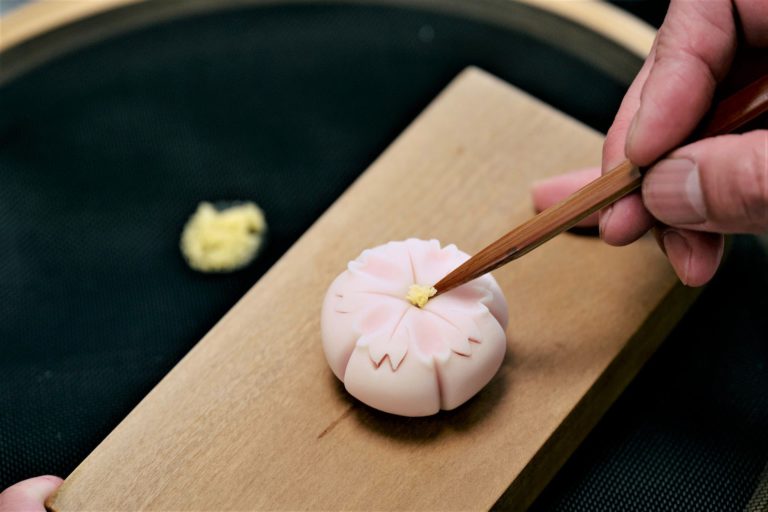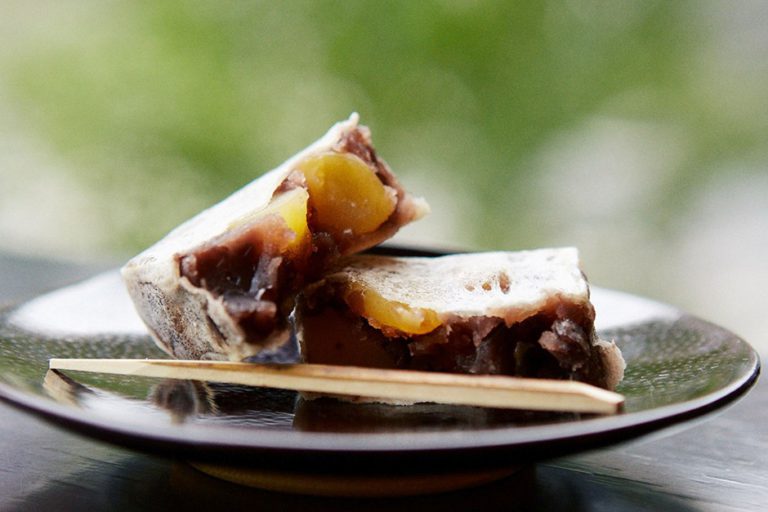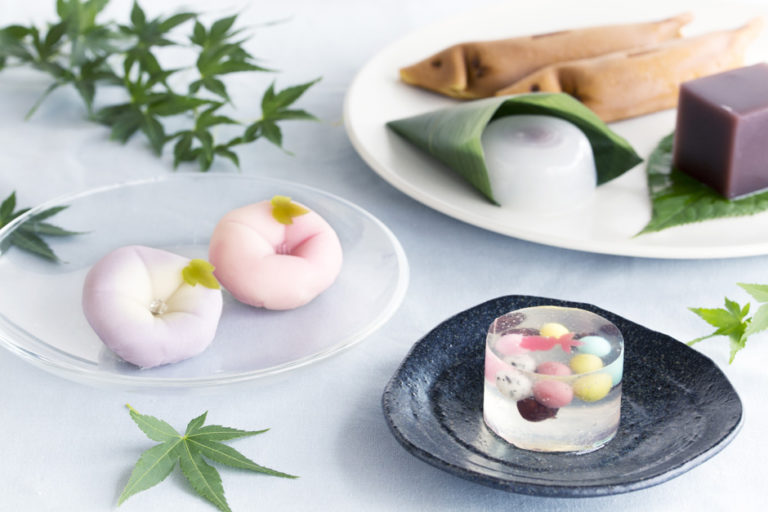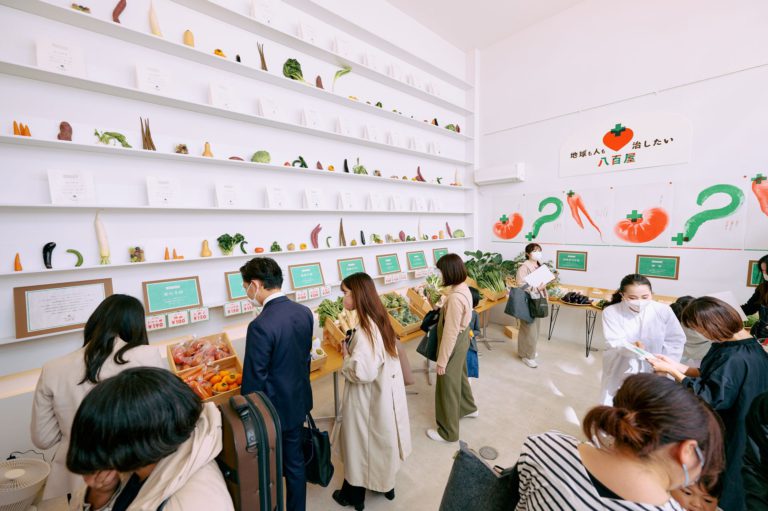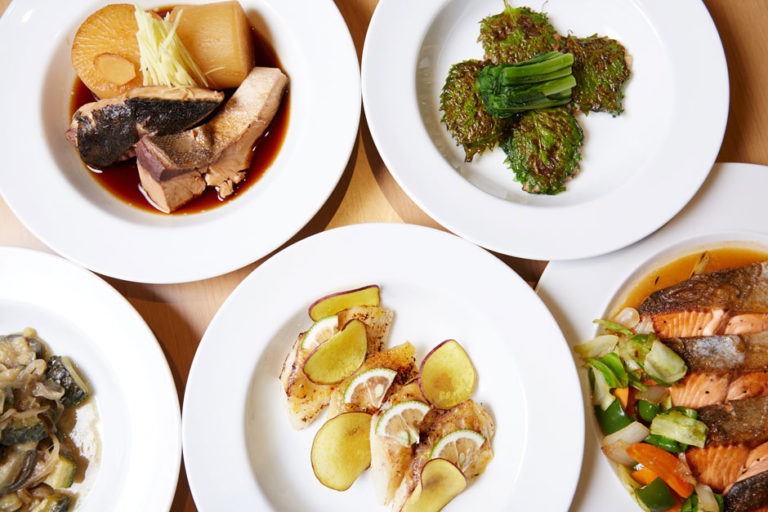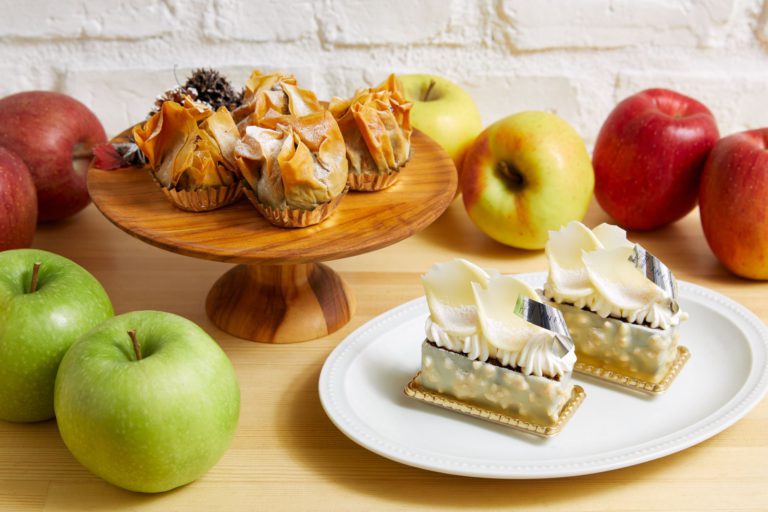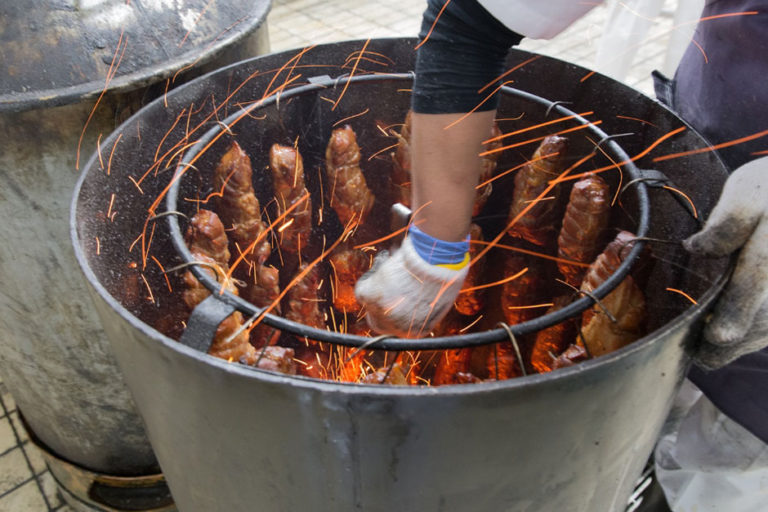Encounter the Season: Japanese Wintertime Confectionery
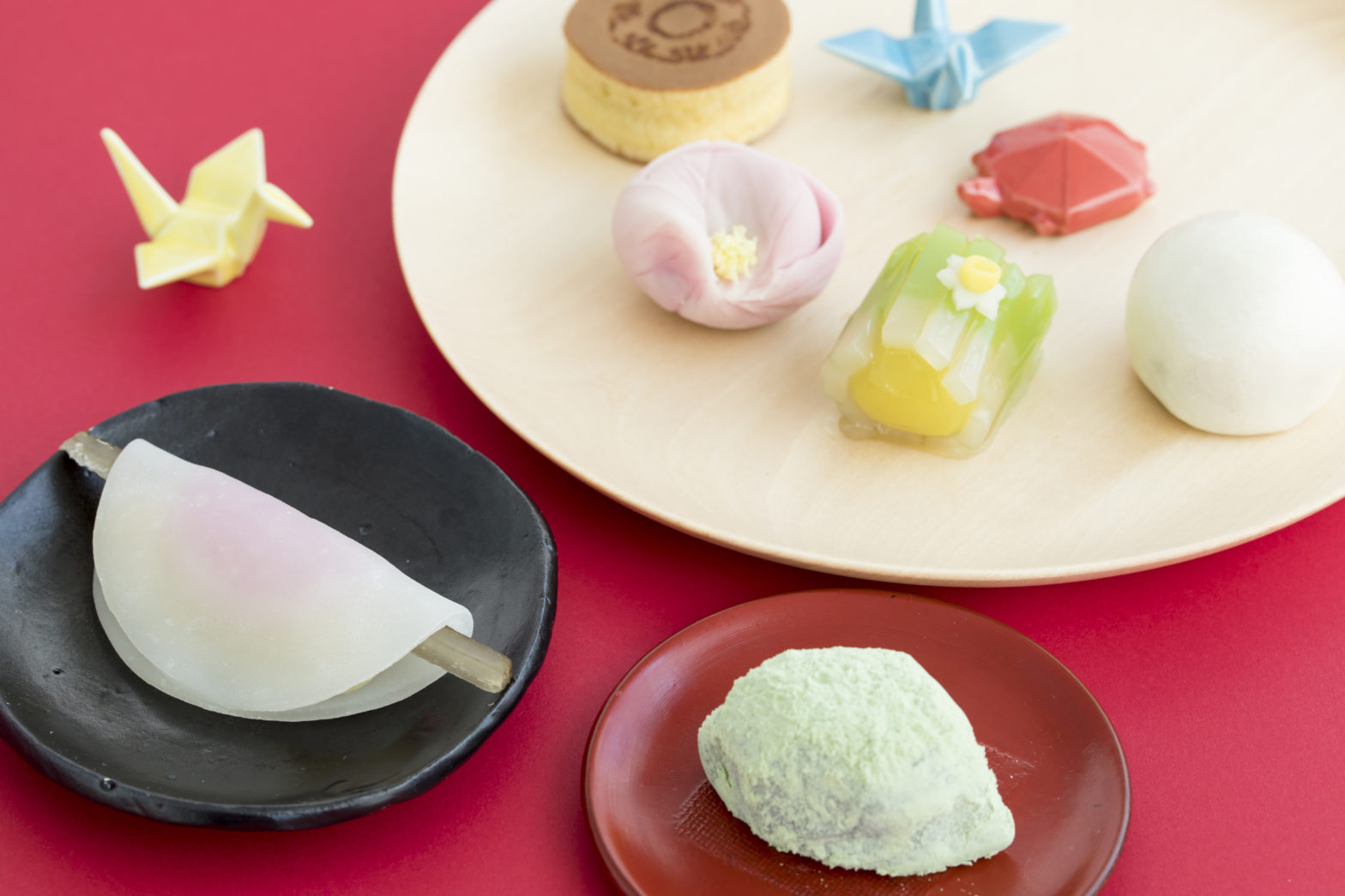
Winter Japanese confectionery

●Tsubaki (camellia)-domyoji
This delicate sweet has red bean paste wrapped in steamed domyoji rice powder which has been mixed with sugar and simmered in water. Unlike the spring-time sakura (cherry)-domyoji, camellia leaves used for this confectionary are not edible. However, the slightly translucent glutinous rice is reminiscent of a snowball, offering a pleasant winter-time motif.

●Saka-manju (sweet bun)
The outside dough is made from sakadane (yeast mash left from sake manufacturing) mixed with sugar and flour before being fermented. It offers a chewy texture and the sweet fragrance of malted rice. This confectionary is extremely popular as a gift to take when visiting people, and is made only during cold seasons when sake manufacturing is also underway.

●Nerikiri “Ume (plum)”
This nerikiri (kneaded and cut) sweet has red bean paste wrapped in red-colored white bean paste before being shaped into a plum. This motif is popular during the New Year’s celebration as plums have an image of celebratory happiness.

●Tou-manju
This baked sweet has red bean paste wrapped in a sponge cake-like crust. It has a soft texture made possible by baking the manju at high heat for short times in copper molds. The Isuzu version is branded with a drum design. Tou-manju is also known for its appearance in Soseki Natsume’s novel The Gate.
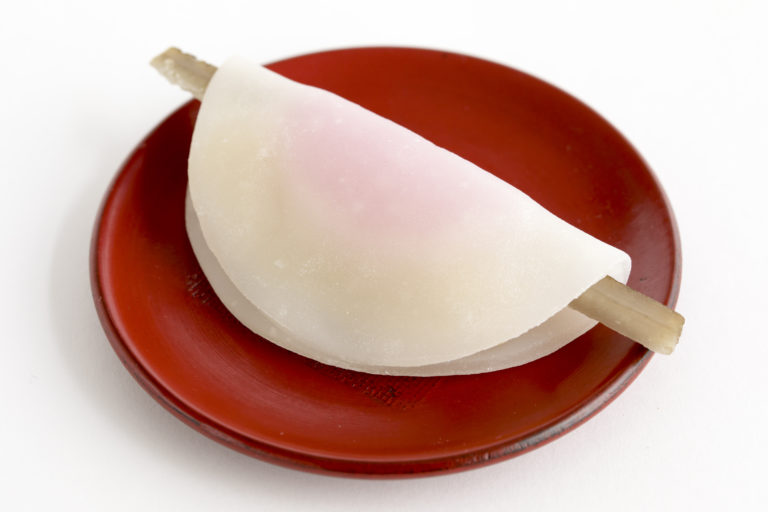
●Hanabira (flower petal)-mochi
This wagashi, made to look like a plum flower petal, is popular as a sweet presented at hatsugama (the first tea ceremony to be held in the beginning of a new year). Newly harvested burdock is boiled and sweetened with syrup, to be wrapped with a thin skin together with white bean paste mixed with white miso. The ingredients of the external layer differ from region to region, and it can be made from rice cake or sweet rice jelly.
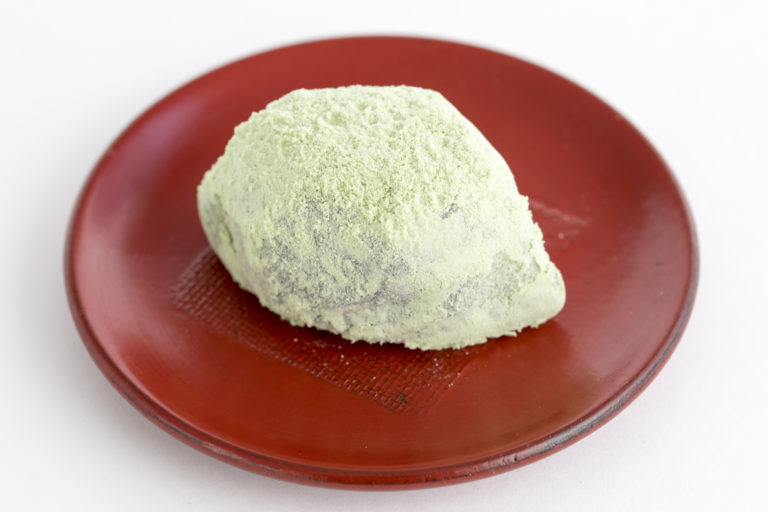
●Uguisu (bush warbler)-mochi
This wagashi signals the coming of spring, one step before cherry blossoms, and appears on Isuzu shelves from the middle of January. Smooth red bean paste is wrapped by soft Turkish delight-like rice flour and sprinkled with green soybean flour. This wagashi simulates the Japanese bush warbler, which symbolizes the start of spring.
*The names of the confectionery in this article are Isuzu’s product names. They may have different names in other regions.
Colorful wagashi sweets to celebrate the New Year
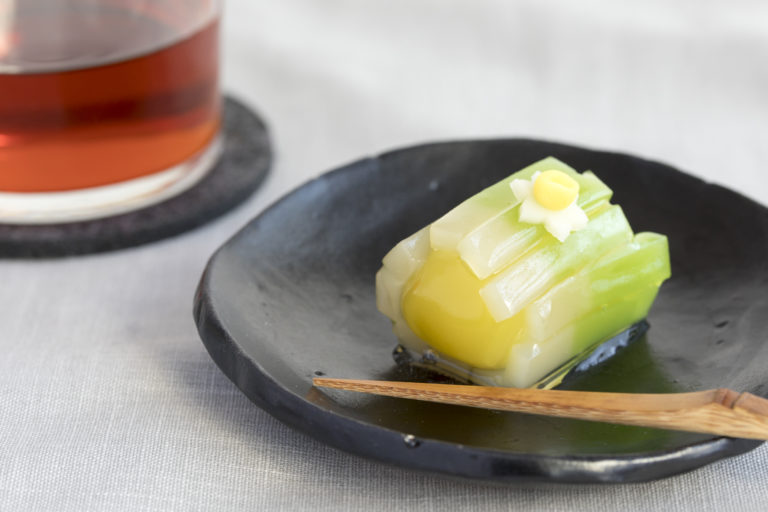
“The winter season has the most variety of wagashi, making wagashi-choosing in shops a lot of fun!”
We asked the representative of Isuzu, Shigeru Aida, about characteristics of winter-time wagashi. Various types of colorful wagashi are sold during the winter months, as there are many occasions for celebration such as the New Year. According to Aida, the wagashi during this season are often crafted with a stronger color than usual to boost the celebratory mood. The Kansai region is espe-cially known to have many shops using bold colors.
At Isuzu, the holiday season is time for high-grade, fresh confections using the celebratory motifs of pine, bamboo and plum, crane, turtle and sea breams.
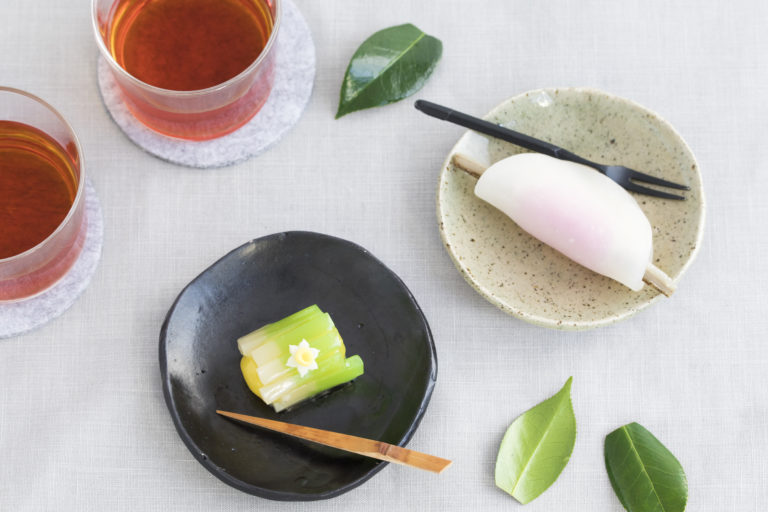
“Winter-time wagashi are not on shelves for long. This includes high-grade, fresh sweets for New Year’s celebrations, wagashi with zodiac signs, and Hanabira (flower petal)-mochi that is only made in the beginning of January. Most sweets are only sold for a limited amount of time, so I rec-ommend keeping that in mind when visiting shops,” says Aida.
Another characteristic of winter wagashi is how customers tend to select tried-and-true standard sweets during this time, because these sweets are often used as gifts. The saka-manju, which is sold only during the winter, is especially popular among loyal customers.
In recent years, high-grade, fresh confectionaries with a Christmas design have also become a holi-day season staple, with many customers purchasing these sweets.
“The year-end and New Year is a season full of warmth with family gatherings. I would be over-joyed if wagashi is included in those gatherings,” commented Aida, on his thoughts as a wagashi artisan.
The sweets culture in Japan was nurtured through the country’s striking seasonal contrasts. Wagashi continues to be a part of events and daily life, while always being one step ahead and expressing the exquisite details in seasonal changes. The artistic mentality of Japan has been handed down within wagashi, which has transcended the definition of food.

